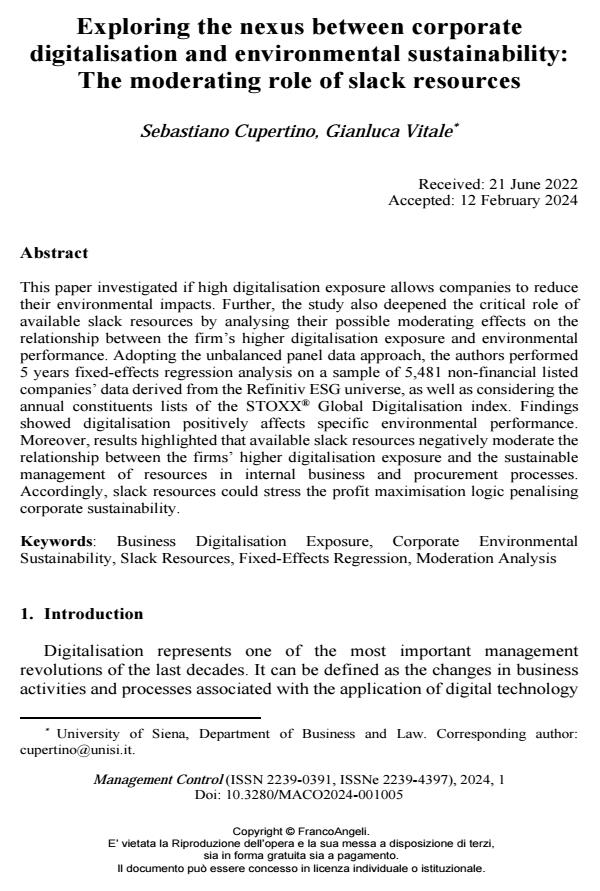Exploring the nexus between corporate digitalisation and environmental sustainability: The moderating role of slack resources
Journal title MANAGEMENT CONTROL
Author/s Sebastiano Cupertino, Gianluca Vitale
Publishing Year 2024 Issue 2024/1
Language English Pages 22 P. 87-108 File size 318 KB
DOI 10.3280/MACO2024-001005
DOI is like a bar code for intellectual property: to have more infomation
click here
Below, you can see the article first page
If you want to buy this article in PDF format, you can do it, following the instructions to buy download credits

FrancoAngeli is member of Publishers International Linking Association, Inc (PILA), a not-for-profit association which run the CrossRef service enabling links to and from online scholarly content.
This paper investigated if high digitalisation exposure allows companies to reduce their environmental impacts. Further, the study also deepened the critical role of available slack resources by analysing their possible moderating effects on the relationship between the firm’s higher digitalisation exposure and environmental performance. Adopting the unbalanced panel data approach, the authors performed 5 years fixed-effects regression analysis on a sample of 5,481 non-financial listed companies’ data derived from the Refinitiv ESG universe, as well as considering the annual constituents lists of the STOXX® Global Digitalisation index. Findings showed digitalisation positively affects specific environmental performance. Moreover, results highlighted that available slack resources negatively moderate the relationship between the firms’ higher digitalisation exposure and the sustainable management of resources in internal business and procurement processes. Accordingly, slack resources could stress the profit maximisation logic penalising corporate sustainability.
Keywords: Business Digitalisation Exposure, Corporate Environmental Sustainability, Slack Resources, Fixed-Effects Regression, Moderation Analysis
Sebastiano Cupertino, Gianluca Vitale, Exploring the nexus between corporate digitalisation and environmental sustainability: The moderating role of slack resources in "MANAGEMENT CONTROL" 1/2024, pp 87-108, DOI: 10.3280/MACO2024-001005